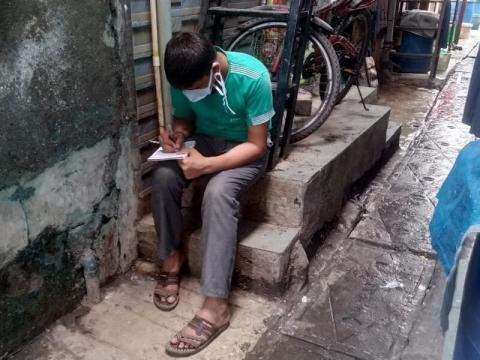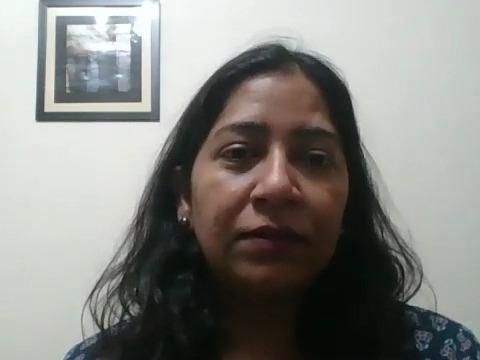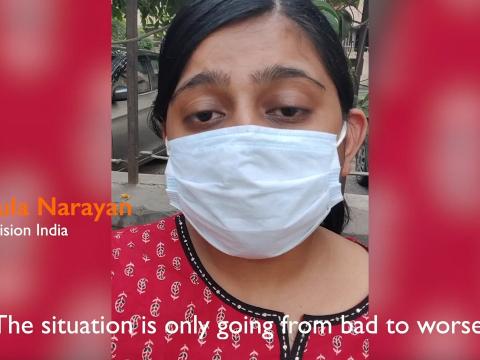
India fights COVID-19: It takes all of us to end the pandemic
By Madhav Bellamkonda
Ashmitha, a lively and happy 9-year old girl from our intervention area in Bangalore, cherished spending time with her father. Unfortunately, her father contracted the deadly coronavirus in the second wave of the pandemic. He succumbed to the illness as precious time was lost searching for a hospital bed with an oxygen supply in a city where the healthcare system was pushed to the brink. “I did not get a chance to say goodbye,” said Ashmitha as she sat weeping.
At the beginning of the year, India seemed to be winning the battle against the pandemic with daily cases as low as 9,000 in February, but it was only a brief triumphant euphoria. The devastating second wave of the pandemic, caused by more virulent strains (both imported and indigenous), abandonment of COVID-19 protocols by a large population, and ‘super-spreader’ mass gatherings, has stretched India’s long-underfunded healthcare system. In a short span of eight weeks, India’s daily caseloads reached an average of over 300,000 cases per day, with a new record of daily infections on 6 May, and with only a little over 2% of the 1.3 billion population fully vaccinated, the danger of more numbers of people getting infected and further possible COVID-19 waves looms large over India and its healthcare system.
With 8.5 hospital beds per 10,000 people and eight physicians per 10,000 patients, the country’s healthcare sector is highly under-equipped to effectively respond to the existing and impending crisis. Many incidences like Ashmitha’s will continue to echo across India if we do not address this emergency on a war footing. Hospitals in India are currently running short of beds, oxygen and overstretched healthcare staff. In the initial phase of the second wave, the cities were the worst affected, but now the caseloads are quickly rising in rural India. This is a major cause of concern as the healthcare infrastructure in the rural areas are inadequately equipped to deal with a pandemic of this scale, pushing the rural population to seek medical attention in the cities, further exacerbating the healthcare system in the urban areas.
Handling of the COVID-19 crisis has brought to the fore the gaps in the public health systems, which is the result of the underfunding of the health, sector, particularly in rural India, by various governments, both at the Centre and states. Although the Union Budget of 2021-2022 fiscal year saw a 137% increase from the previous year in the allocation for the health and well-being sector, including a special provision for COVID-19 vaccinations, it is only a tiny fraction of the country’s overall Gross Domestic Product.
The Indian constitution guarantees Right to Life for all citizens and this very right is threatened by the crisis, particularly for the most vulnerable and marginalised sections of society. The government of India has already called the civil society organisations to join hands in fighting this pandemic so that this constitutional right is guarded.
This is a crucial moment for India. The approach should be tactical and strategic, as healthcare experts have predicted a third wave of the pandemic in the country. While the immediate need is ramping up the much-needed oxygen supply and the hospital beds in urban and rural India, there is a need to put in place support systems for those vulnerable millions of children who could potentially be the victims of the next wave, if not already. Non-governmental organisations could provide much-needed support to the government and the people in fighting the pandemic and coping with the aftereffects in future.
The embedded presence of development organisations, such as World Vision India, whose grass-roots presence being its core strength, can play a crucial role in bridging the gap between the state and communities. They can provide the last-mile connectivity such as ensuring access to healthcare, aiding medical facilities with beds and equipment, assisting beneficiaries’ access government schemes and delivery of relief packages and creating awareness on COVID-19 vaccination.
The COVID-19 pandemic has exposed us to a health and humanitarian crisis where gaps in healthcare systems, government policies and personal behaviour have pushed us to a point where our Right to Life has been threatened. A collaborative effort between the government, civil society organisations and individuals is the only way to overcome this unprecedented crisis, co-creating a future where every child enjoys life in all its fullness.
Madhav Bellamkonda is the National Director and CEO of World Vision India. Read more about how his team are affected, and responding, here.

